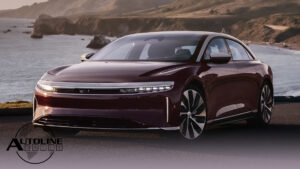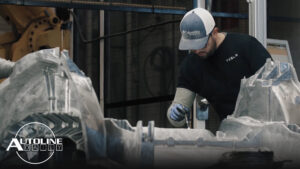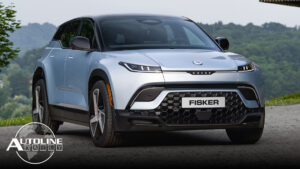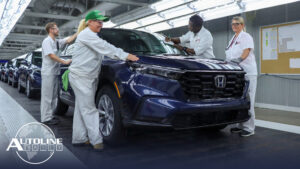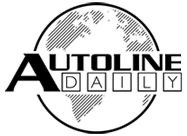
Autoline Daily
Get an inside look at the global auto business with Autoline Daily. From the morning’s top news to in-depth industry analysis, Autoline Daily covers the auto beat like no other media. Available every weekday, it’s your outlet for the latest industry buzz.
AD #3806 – Could Lucid Run Out of Money?; NIO Launching Affordable Brands in Europe; CATL Wants to License Tech to Others
May 7, 2024
Listen to “AD #3806 – Could Lucid Run Out of Money?; NIO Launching Affordable Brands in Europe; CATL Wants...
AD #3805 – EVs Put Dent in Gasoline Demand; U.S. Updates EV Tax Credit Rules, More Eligible; France Boosts EV Sales Targets
May 6, 2024
Listen to “AD #3805 – EVs Put Dent in Gasoline Demand; U.S. Updates EV Tax Credit Rules, More Eligible;...
AD #3804 – U.S. New Car Sales Drop in April; Audi’s Q1 Profits Plunge; Ferrari Launches New V12 Powered Cars
May 3, 2024
Listen to “AD #3804 – U.S. New Car Sales Drop in April; Audi’s Q1 Profits Plunge; Ferrari Launches New...
AD #3803 – Tesla Gives Up on Massive Gigacasting; Recalls Nearly Hit Record; Cadillac Backs Off EV-Only Lineup
May 2, 2024
Listen to “AD #3803 – Tesla Gives Up on Massive Gigacasting; Recalls Nearly Hit Record; Cadillac Backs Off...
AD #3802 – Hybrids Outpace EVs In California In Q1; Aston Martin Not Dropping V12 Engines; China Launches “Cash for Clunkers” Program
May 1, 2024
Listen to “AD #3802 – Hybrids Outpace EVs In California In Q1; Aston Martin Not Dropping V12 Engines; China...
AD #3801 – New Rule Makes Auto Braking Standard; Tesla Cuts Headcount Even More; Tough Q1 for EU Automakers
April 30, 2024
Listen to “AD #3801 – New Rule Makes Auto Braking Standard; Tesla Cuts Headcount Even More; Tough Q1 for EU...
AD #3800 – Fisker Sells Mansion to Save Company; Tesla Sees FSD Gold in China; Europe Needs 8X Public EV Chargers
April 29, 2024
Listen to “AD #3800 – Fisker Sells Mansion to Save Company; Tesla Sees FSD Gold in China; Europe Needs 8X...
AD #3799 – Ram’s New RHO Performance Truck; Honda Reveals Two New EVs In China; U.S. April Sales Expected to Dip
April 26, 2024
Listen to “AD #3799 – Ram's New RHO Performance Truck; Honda Reveals Two New EVs In China; U.S. April...




